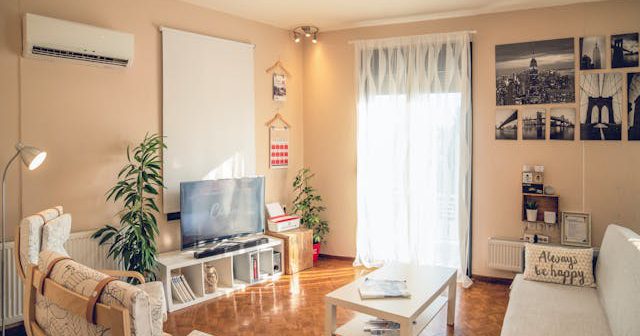A new cooling unit can be a game-changer for comfort at home—but only if you set it up for success from the start. The truth is, even the best equipment can underperform if it’s not chosen and maintained wisely.
If you want your new unit to work at its best, there’s more to it than unboxing and flipping a switch. Here are practical ways to keep your new investment running smoothly from day one.
Know What Size You Really Need
One of the first steps is making sure the unit is the right size for your home. A model that’s too small will struggle to keep you cool, while one that’s too large will cycle on and off too often, wasting energy. Both situations can shorten the life of your equipment and raise your energy bills. The right size is based on factors like your home’s square footage, insulation, and even how much sunlight it gets. A professional assessment can help you get it just right.
Get It Set Up by Experts
Having trained specialists handle your setup ensures that every detail is done correctly. They know how to position equipment, connect components, and fine-tune settings so your cooling works as efficiently as possible from day one. Opting for professional AC installation also protects your warranty and helps avoid costly mistakes. According to experts, improper setup can cause poor efficiency, higher energy bills, and even damage that shortens your equipment’s life. Getting it right the first time is worth the investment.
Verify Proper Airflow and Duct Sealing
Even the most advanced equipment won’t keep you comfortable if the air can’t circulate properly. Leaks or blockages in your ducts can make your cooling uneven and force the equipment to work harder than necessary. This extra strain can lead to breakdowns and higher energy costs over time. Having your ducts inspected and sealed during setup ensures the cooled air goes exactly where it’s needed. Proper airflow also helps maintain a steady temperature throughout your home, avoiding hot or cold spots.
Ensure Proper Refrigerant Levels
Refrigerant is what makes cooling possible, and the amount inside your unit has to be just right. Too little, and the equipment can’t cool effectively; too much, and it can damage the compressor. Both problems increase energy use and reduce efficiency. This is why refrigerant levels should be checked and set by someone with the right tools and knowledge. It’s not a do-it-yourself task—getting it wrong can lead to expensive repairs and shorter equipment life.
Consider Smart Thermostat Integration
Pairing your cooling equipment with a smart thermostat can make a big difference in comfort and efficiency. These devices let you program cooling schedules, adjust settings remotely, and even learn your habits to save energy automatically. You can keep your home comfortable when you’re there and reduce cooling when you’re not, without constantly making manual changes. Smart thermostats also give you insights into energy use, helping you spot patterns and make adjustments that keep your bills under control.
Keep Filters Clean and Replaced Regularly
A clogged filter can quickly reduce how well your cooling system works. It blocks airflow, forces the equipment to work harder, and can spread dust throughout your home. This not only lowers efficiency but can also harm your indoor air quality. Checking your filter once a month and replacing it when needed is one of the easiest ways to protect your investment. It’s a small task that makes a big difference in how smoothly your equipment runs and how comfortable your home feels.
Schedule Regular Maintenance Checks
Routine maintenance isn’t just for fixing problems—it’s for preventing them. A scheduled inspection by a qualified technician can catch small issues before they become costly repairs. These checks often include cleaning coils, checking electrical connections, and ensuring all components are working as they should. By making maintenance a regular part of your plan, you keep performance high, extend the life of your equipment, and avoid the stress of sudden breakdowns in the middle of a hot day.
Invest in System Protection Plans
Many service providers offer protection or maintenance plans that give you extra benefits. These often include priority scheduling, discounts on repairs, and reminders for seasonal tune-ups. Having a plan in place means you won’t forget important upkeep, and you’ll have peace of mind knowing help is available quickly if something goes wrong. For those who want to protect their cooling investment for the long term, a service plan can be a smart, cost-effective choice.
Watch for Early Signs of Trouble
Paying attention to changes in how your cooling works can save you from bigger issues later. Strange noises, weak airflow, or uneven temperatures are often signs that something isn’t right. Higher energy bills without an obvious cause can also point to trouble. Acting quickly when you notice these signs can prevent more damage and keep repair costs lower. Don’t wait until the system stops working entirely—early action is always better.
Maximize Seasonal Performance
Preparing your equipment for each season ensures it works efficiently when you need it most. In warmer months, clean the outdoor unit and clear away any debris. Before cooler months, check that all parts are ready for reduced use and safe storage if needed. Seasonal preparation helps prevent wear and tear, keeps performance consistent, and can even extend the lifespan of your equipment. A little attention before the seasons change can save you money and stress later.
Making sure your new cooling setup works at its best is about more than turning it on and hoping for the best. From getting the size right to keeping up with maintenance, each step helps you enjoy better comfort, lower costs, and fewer breakdowns. Working with experts, using smart tools, and staying alert to small changes all play a role in keeping things running smoothly. By following these tips, you’ll get the most out of your investment and enjoy a cooler, more comfortable home for years to come.





Flexible coupling, universal joint, cardan shaft factory.
RFQ now: https://www.apexcoupling.com/